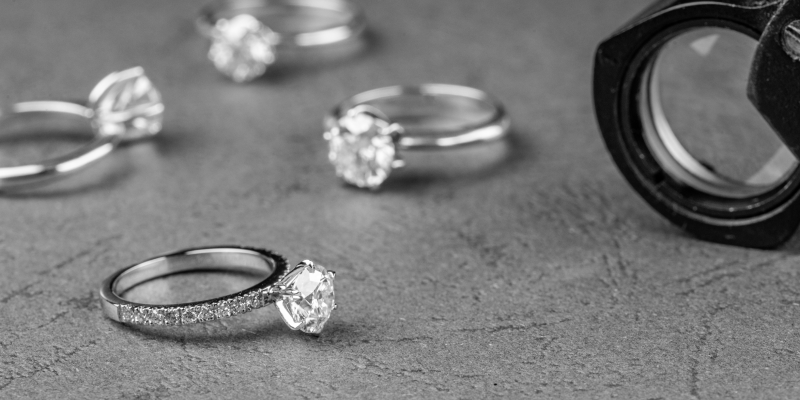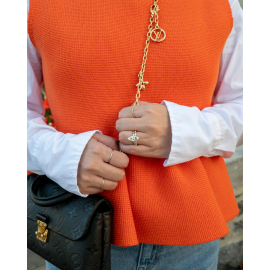Price match guarantee

We’ve teamed up with Klarna to provide flexible payment options, allowing you to shop the way you want. With Klarna, you can split your payment into 3 instalments or choose to pay later, making your shopping experience smoother and more convenient. Your order total must be between £100 and £499 to qualify.

We’ve teamed up with Klarna to provide flexible payment options, allowing you to shop the way you want. With Klarna, you can split your payment into 3 instalments or choose to pay later, making your shopping experience smoother and more convenient. Your order total must be between £100 and £499 to qualify.

October 02, 2020 | by Admin
It is law within the UK that every item of precious metal sold such as Platinum, Gold, Silver is stamped labelling the item with the type of metal it is. Platinum pieces which weigh less than 0.5 grams, 18ct Gold and Palladium pieces weighing less than 1.0 gram and Silver pieces weighing less than 7.78 grams are except from hallmark.
At Diamonds Factory all our products are hallmarked as per UK hallmarking law from London Assay Office (The GoldSmith Company)
The Goldsmiths' Company Assay Office is the oldest assay office in the United Kingdom. It has provided hallmarking services since The Goldsmiths' Company was founded in the 1300s. The company received its royal charter in 1327 and ranks 5th in order of precedence of the 12 Great Livery Companies of the City of London.
Hallmarking dates back to the 1300s when Edward I of England passed a law requiring any item made of silver, which was offered for sale, to be at least of equal quality as that of the coin of the realm (silver currency). The wardens of The Goldsmiths' Company were tasked with visiting workshops in the City of London to assay (test) silver articles. If these articles were found to be below standard they were originally destroyed and the metal forfeited to the King. If they passed, each article received the King's mark of authentication - the mark of a leopard's head. By 1478, there were several hundred workshops and merchants manufacturing silver articles in the City of London. It was not possible for the wardens to visit them all so the merchants were ordered to bring their items to Goldsmiths' Hall for testing and marking and a permanent Assay Office was established in the building. This is the origin of the term hallmark - struck with the King's mark at Goldsmiths' Hall.
In 1544 the Goldsmith's Company adopted the King's mark as their town mark and the mark of the leopard's head is now internationally recognised as the mark of this assay office.
The Goldsmiths's Company Assay Office is still based at Goldsmiths's Hall and remains the oldest company in Britain to be continually trading from the same site. However, it also has two satellite offices; at Greville Street in Hatton Garden in the heart of the London jewellery quarter and within a high security complex near London's Heathrow airport. It now has a new off-site facility within the Dalston-based jewellery manufacturer, Allied Gold. This is the first time in the Assay Office's 700 year history that it has opened permanent hallmarking services on a customer's premises.
In addition to hallmarking, the office has now expanded its range of services to support the jewellery trade and enforcement authorities. It offers a variety of specialist analytical services including nickel, lead & cadmium testing, antique silver dating, non-destructive compositional analysis, plating thickness measurement and a melt and assay service for scrap precious metal carried out in their fully independent on-site laboratory. Other services offered are a jewellery valuation service, laser marking, trading standards assistance, high quality photography and a comprehensive range of training and educational seminars, lectures and specialist events.






Jewellery making is an art form that requires precision and skill. Several steps need to be taken when crafting diamond rings, such as designing and casting to polishing and quality checks. In this article, we discuss how diamond rings are made and the process we follow.
How are diamond rings made? In steps
Step 1 - Creating the design
Step 2 - Making a wax model and casting the rings
Step 3 - Sizing the rings
Step 4 - Pre-polishing the rings
Step 5 - Setting the stones
Step 6 - Polishing the rings and rhodium plating
Step 7 - Final checks in quality control
1. Designing diamond rings
Every diamond ring, such as an engagement ring or wedding ring, begins its life as an idea or vision. From this, the designer creates a sketch by hand or computer-aided design (CAD) to bring their idea to life. Once the design is finalised, it begins the manufacturing process.
2. Wax model making and casting
The next step is to create a wax model of the ring. Following the design, the craftsperson uses various types of wax and wax carving tools to carve a model of the ring. Once complete, it should look like a replica of the ring design.
A plaster mould is then made of the wax model so that it can be duplicated as many times as necessary. When a specific ring style is required, hot wax is injected into the plaster mould and removed once it is cooled. This serves as a casting model.
Wax models of different ring styles are combined in what is called a ‘wax tree’. This is to keep every ring that needs to be cast in a specific metal together. Wax trees are put into forms and plaster is poured in to create a mould. They are then baked at a high temperature, to evaporate the wax models inside and leave behind a cavity of ring styles ready to be filled with metal.
Metal is transformed into liquid by heating it to extreme temperatures. The desired metal is then vacuumed into the plaster form with the cavity of ring styles. The metal hardens to form raw castings of the rings.
3. Preparing and sizing the rings
The raw castings are removed individually and prepared for sizing. Each ring is gently tapped with a hammer and heated, to enable it to be sized correctly. It is then filed into shape and finished with a fine, abrasive rubber wheel. The rest of the ring is then prepared for the pre-polishing process.
4. Pre-polishing
During pre-polishing, a variety of mops and different grades of polishing compound are used to make the metal look its best and prepare the ring for setting.
5. Setting diamonds or gemstones
If multiple diamonds are being used, for example, in an eternity ring or engagement ring, the diamonds are measured and matched ahead of being set. The diamonds or gemstones are then set into the ring using specialist tools.
6. Polishing and rhodium plating the ring
The ring is then sent to be polished, this time using finer polishing compounds. If the customer has requested it, this is when any white gold rings are rhodium plated to protect the metal from scratching and enable it to keep it’s bright white colour.
7. Quality control
Lastly, every ring is passed through quality control and checked under 10x magnification to ensure they meet our high standards before being delivered to our customers.
All of our jewellery is made-to-order and can be customised how you wish. Discover our range of diamond rings online or learn more about our bespoke diamond jewellery service if you have a unique ring design in mind.